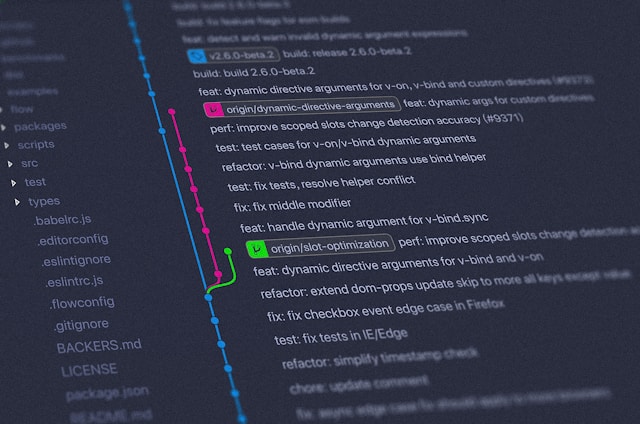Last week, I was debugging a React component that had been giving our team headaches for three days straight. The kind of bug that makes you question your life choices. And then it hit me – this whole mess could’ve been avoided if we’d structured things differently from the start.
That’s the thing about frontend development right now. We’re at this weird crossroads where the old ways of doing things are breaking down, but the new approaches are still… well, new. Scary new, sometimes.
I’ve been watching the front-end development services in Coimbatore space evolve over the past few years, and 2025 is shaping up to be one of those years where everything changes. Not gradually. All at once.
Micro Frontends: When Big Gets Too Big
Here’s a confession: I used to roll my eyes at micro frontends. Seemed like over-engineering to me. Why complicate things when you’ve got a perfectly good monolithic frontend that works?
Then I worked on a project with eight different teams, all trying to deploy features simultaneously. Absolute chaos. Merge conflicts everywhere, teams stepping on each other’s code, releases getting delayed because someone broke something in a completely different part of the app.
Micro frontends suddenly made sense.
The idea isn’t complicated – instead of one giant frontend application, you split it into smaller, independent pieces. Each team owns their slice, deploys on their own timeline, can even use different frameworks if they want to.
For UI development company operations, this is huge. You can have your React experts working on the dashboard while your Vue specialists handle the admin panel. Users never know the difference, but your development velocity? Night and day.
The tricky part is getting the architecture right. I’ve seen teams jump into micro frontends and create an even bigger mess than they started with. You need shared components, consistent styling, proper communication between the pieces. It’s not magic – it’s careful planning.
Edge UIs: Closer Than You Think
Remember when everything had to talk to servers halfway across the world? Those days are numbered.
Edge computing for UIs is starting to make real sense, especially if you’re frontend developers India serving global clients. Instead of a user in Chicago waiting for your server in Mumbai to respond, their request gets handled by something much closer to home.
I worked on a frontend for SaaS platforms project last year where latency was killing the user experience. Every click felt sluggish. Every form submission took forever. Edge processing cut our response times by 60%. Users noticed immediately. 
The development side gets interesting too. You’re not just thinking about browser performance anymore – you’re thinking about distributed systems, edge caching, what happens when edge nodes go down. It’s complex, but the results speak for themselves.
Frontend developers in India are getting really good at this stuff. The time zone differences that used to be a challenge? They’re actually an advantage when you’re thinking globally about where code executes.
Components: Finally Getting It Right
I’ll admit something embarrassing. For years, I built components like I was writing essays. Each one was this beautiful, unique snowflake that solved exactly one problem in exactly one way.
Terrible approach.
Good components are boring. They’re predictable, reusable, and they work the same way every single time. Like LEGO blocks – you want them to fit together cleanly, not be architectural marvels on their own.
The best frontend company USA teams I’ve worked with have these incredible component libraries. Not just UI pieces, but entire systems of components that handle complex workflows. Need a data table with filtering, sorting, and pagination? There’s a component for that. Need a multi-step form with validation? Component.
How to build responsive UI becomes much easier when your components handle responsiveness internally. Instead of writing media queries everywhere, you design smart components that adapt automatically.
But here’s what nobody talks about: documentation. Your components are only as good as your documentation. I’ve seen brilliant component libraries become unusable because nobody could figure out how the pieces fit together.
State Management: Beyond the Redux Headaches
Redux was supposed to solve all our state management problems. Instead, it gave us different problems. Boilerplate everywhere, actions and reducers for simple updates, debugging that made you want to cry.
Don’t get me wrong – Redux isn’t evil. But it’s not always the answer.
The newer tools are much more pragmatic. TanStack Query handles server state beautifully. Zustand gives you global state without the ceremony. Even React’s built-in state management has gotten much better.
I’m working on a project right now where we’re using three different state management approaches in the same app. Sounds crazy, but each tool handles what it’s best at. Local component state for UI interactions, TanStack Query for server data, Zustand for global app state.
The key insight? State management isn’t a single problem with a single solution. It’s a bunch of related problems that need different approaches.
AI Tools: Friend, Not Replacement
Let’s get this out of the way: AI isn’t replacing frontend developers. But developers who use AI effectively? They’re definitely outpacing those who don’t.
I use GitHub Copilot daily now. Not to write entire components – that rarely works well – but for the tedious stuff. Generating test cases, writing type definitions, creating boilerplate code. It’s like having a really fast junior developer who never gets tired.
The best part? It handles patterns really well. Once you establish a coding style, AI tools pick up on it and maintain consistency across your codebase. Less time spent in code reviews arguing about semicolons and naming conventions. 
But – and this is important – AI tools are terrible at business logic. They don’t understand your users, your constraints, your architectural decisions. They’re tools, not architects.
When I’m hiring frontend developers India for my projects, I look for people who can work with AI tools effectively while still making smart architectural decisions. It’s a different skill set than pure coding ability.
Performance: The Forgotten Feature
Users don’t care about your tech stack. They care about whether your app is fast.
I learned this the hard way on a project that was technically brilliant but slow as molasses. Beautiful code, perfect architecture, latest frameworks – and users were leaving after 5 seconds because nothing loaded quickly enough.
Modern frontend architecture has to consider performance from day one. Not as an optimization task for later, but as a core requirement that influences every decision.
Code splitting, lazy loading, intelligent caching – these aren’t advanced techniques anymore. They’re table stakes. Frontend for SaaS platforms especially can’t afford to be slow. Your users have alternatives, and they’re not shy about using them.
The tricky part is balancing performance with developer experience. The fastest approach isn’t always the most maintainable one. Good frontend architecture finds the sweet spot between speed and sustainability.
Cross-Platform Reality Check
The “write once, run everywhere” dream has been around forever. We’re finally getting close to making it work.
PWAs are getting scary good. Flutter and React Native have matured significantly. The line between web and native apps is blurring in ways that actually benefit users.
But here’s the thing – cross-platform doesn’t mean identical-platform. An interface that works perfectly on desktop might be terrible on mobile, even if the underlying code is shared. Good cross-platform development requires platform-specific thinking, not just shared code.
I’ve seen teams waste months trying to force the same UI patterns across completely different user contexts. Better to share business logic and data management while letting each platform express the interface in its own way.
What This Means for Your Business
If you’re running a business that depends on frontend development, these trends matter for practical reasons:
Your development costs will change. Some things get cheaper (AI-assisted coding, component reuse), others get more expensive (edge infrastructure, distributed architecture).
Your hiring strategy needs updating. The frontend developers who thrive in 2025 are systems thinkers, not just code writers. They understand performance, user experience, and business constraints.
Your competitive advantage might come from execution speed rather than feature completeness. Teams that can deploy quickly and iterate based on user feedback will outpace those building perfect solutions slowly.
Getting Started
You don’t have to adopt everything at once. Pick one trend that solves your biggest current pain point and experiment with it on a small project.
Struggling with team coordination? Try micro frontends on a new feature. Performance problems? Start with basic edge caching. Spending too much time on repetitive coding? Explore AI tools.
The key is learning while building real things, not pursuing trends for their own sake.
At Noukha, we help businesses navigate these changes without getting overwhelmed by the hype. Because at the end of the day, the best frontend technology is the one that helps you serve your users better.
And honestly? That’s what makes this work interesting. The technology keeps changing, but the goal stays the same: build things people actually want to use.
Want to explore how these trends apply to your specific situation? Reach out to our team – we’d love to talk about your challenges and see how modern frontend approaches might help.



